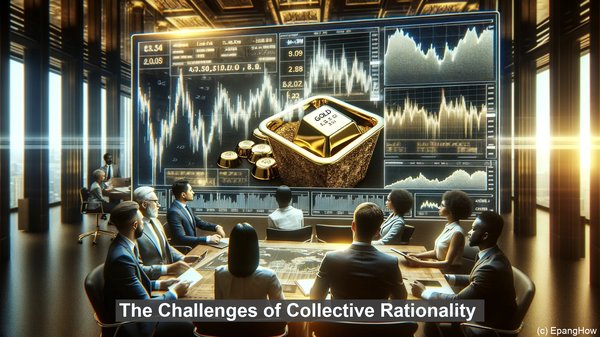Introduction: The Dual Perspectives
Hello everyone! When it comes to economic decision-making, we often encounter two contrasting yet interconnected notions: individual rationality and collective rationality. In this article, we’ll explore the differences between these two concepts and how they shape our understanding of decision-making processes.
Individual Rationality: The Pursuit of Self-Interest
Individual rationality, as the name suggests, focuses on the decision-making process from an individual’s perspective. It revolves around the idea that individuals act in their own self-interest, aiming to maximize their personal benefits or utility. This concept is deeply rooted in classical economic theory, where rational individuals are seen as the building blocks of larger economic systems.
The Rational Individual: Assumptions and Limitations
While individual rationality provides a useful framework for analyzing economic behavior, it’s important to acknowledge its assumptions and limitations. For instance, it assumes that individuals have perfect information, can accurately assess the costs and benefits of their choices, and make decisions solely based on rational calculations. However, in reality, these assumptions often fall short. Human decision-making is influenced by various factors, including emotions, social norms, and cognitive biases.
Collective Rationality: The Power of Collaboration
In contrast to individual rationality, collective rationality takes a broader perspective, considering the decision-making process at a group or societal level. It recognizes that in many situations, collective action and collaboration can lead to outcomes that are more beneficial for the group as a whole, even if they might not align with the immediate self-interest of every individual. This concept is particularly relevant in areas such as public policy, where decisions impact a large number of people.

The Challenges of Collective Rationality
While collective rationality offers the potential for optimal outcomes, it also presents challenges. One key challenge is the issue of coordination. In large groups, ensuring that everyone acts in a way that aligns with the collective interest can be complex. Additionally, the presence of free-riders, individuals who benefit from collective efforts without contributing, can undermine the effectiveness of collective action.

Balancing Individual and Collective Rationality
In many real-world scenarios, the goal is to strike a balance between individual and collective rationality. This often involves designing mechanisms or institutions that align individual incentives with the collective interest. For example, in the context of environmental conservation, creating economic incentives for sustainable practices can encourage individuals to act in ways that benefit the environment and the larger community.
